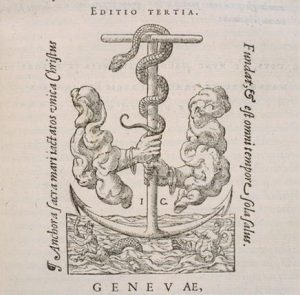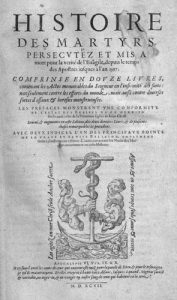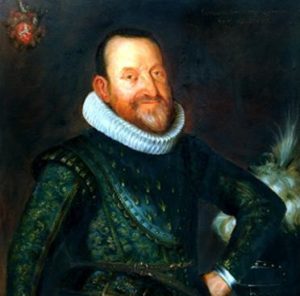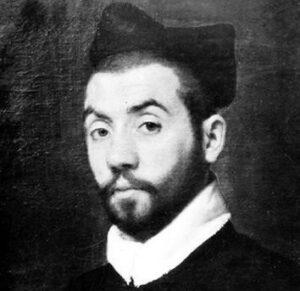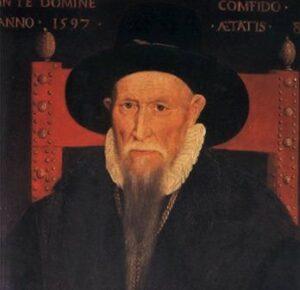From the world of law to the world of publishing
Jean Crespin was born in Arras in 1520 ; he studied law in Louvain and became a lawyer in his native town, where he practised from 1520 to 1544. However, in the company of other lawyers, he was considered to be a heretic, so he could not go on living there ; (it is interesting to note that many lawyers, like him, had been strongly influenced by Luther’s ideas). He was taken to court and outlawed on 28th March 1545.
He went first to Strasbourg and then on to Geneva, where he was given the right to citizenship in 1548.
From this date onwards, Jean Crespin no longer practised law ; he became instead, a very enterprising publisher – within the space of twenty years, 250 books had come off his press.
He died of the plague in Geneva in 1572.
Jean Crespin was not only a publisher, but also an editor and a bookseller
Printing was a key profession in Geneva : more than a thousand people lived by it, that is to say, 5% of the population.
Jean Crespin’s publishing house was a thriving business, as well as that of Estienne, who had also come over from France.
Most of his works were connected with religion :
First, he published editions of the Bible in French, but also in other modern languages (Italian, Spanish, English) ; he also published the New Testament in Latin (1552) and in Greek (1553).
Crespin published the first translations of the psalms in verse by Théodore de Bèze (1551), liturgies, catechisms, historical narratives and anti-catholic tracts.
Most of his catalogue consists of works to do with the Reformation movement, but from 1564 he published more and more non-religious works.
He published some school textbooks, grammar books, dictionaries, books about civil roman law, but his preference was for Greek poetry. In 1558, he published his first edition of the Iliad.
The Livre de Martyrs
In 1554, he published Le Livre de Martyrs, a very significant histio-graphical work about the Reform movement, which was republished several times, although the author changed his religious approach somewhat in later editions.
This book was written in commemoration of those who had died for their faith and was based on authentic documents.
In the 1564 edition, the author had a more humanistic attitude and also included poems and engravings.
The 1570 edition was centred on the history of the French Church, making a parallel between the religious persecution of 16th century France and that of the early Church.

